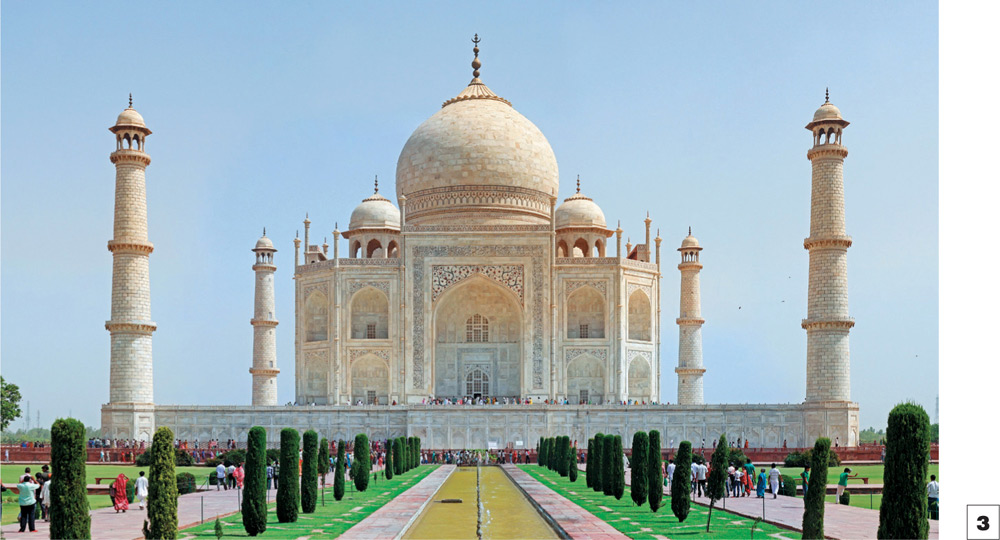 The Taj Mahal, 1632–53
The Taj Mahal, 1632–53THE JOYS OF PERFECT BALANCE
Symmetry is a quality of ideal balance, where each half of a picture or sculpture is a perfect mirror image of the other. In art, symmetry is generally vertical, which is to say that the central axis runs from top to bottom of the artwork. This is known as “bilateral symmetry.”
Symmetrical images convey a sense of frontality and stability and can be particularly powerful in creating a sense of presence. Because the human body is more or less symmetrical, we perhaps associate symmetry with the presence of another being.
This quality of presence conveyed by symmetrical images has been used over the millennia in religious art. There are many examples, ranging from Byzantine, medieval, Renaissance, and Baroque paintings, where a religious figure or part thereof is presented symmetrically. The central image of Christianity, the cross, is a symmetrical image, as is the Star of David. Similarly, in tribal cultures, masks, costumes, and sculpture are often symmetrical, suggesting and conveying presences both human and supernatural. This quality was exploited to great effect by the American painter Mark Rothko (1903–70), whose abstract paintings presented soft-edged rectangles in vertically symmetrical arrangements.
The downside of symmetry is that its very stability can lead to a lack of drama. The eye can be somewhat bored looking at an exactly balanced image that repeats the same information on either side of an axis. This sets up the possibility of exploring near-symmetry, the idea that the eye is interested in an image that promises symmetry but then delivers subtle differences between the two sides of the image.
Symmetry plays a larger role in the decorative arts and in architecture and furniture design. The advantages of symmetry in decorative schemes is self-evident, while the construction of buildings around a central axis offers opportunities for balanced aesthetics and ease of use. In the design of religious structures, the sense of presence offered by symmetry clearly plays a role.
See also: Balance on page 24; Religiosity on page 150
 The Taj Mahal, 1632–53
The Taj Mahal, 1632–53
An essay in quiet presence based on exact symmetry.
